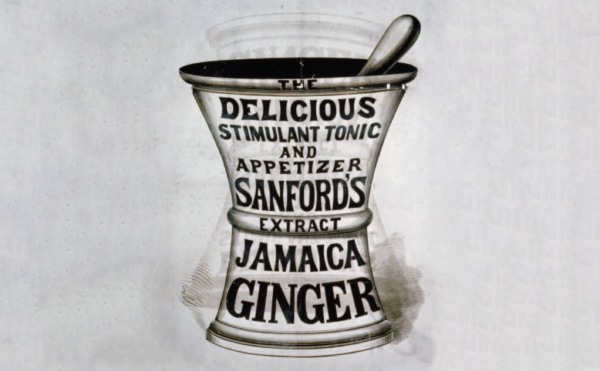In this episode of The Disappearing Spoon, host Sam Kean explores how Issac Newton committed his biggest blunder and imperiled the entire nation. This is the first in a three-part series on legendary physicists and their dumbest mistakes.
Listen to Part 2: Albert Einstein >>
Listen to Part 3: Stephen Hawking >>
About The Disappearing Spoon
The Science History Institute has teamed up with New York Times best-selling author Sam Kean to bring a second history of science podcast to our listeners. The Disappearing Spoon tells little-known stories from our scientific past—from the shocking way the smallpox vaccine was transported around the world to why we don’t have a birth control pill for men. These topsy-turvy science tales, some of which have never made it into history books, are surprisingly powerful and insightful.
Credits
Host: Sam Kean
Senior Producer: Mariel Carr
Producer: Rigoberto Hernandez
Associate Producer: Padmini Raghunath
Audio Engineer: Jonathan Pfeffer
Transcript
We all know one Isaac Newton. The brilliant scientist whose theory of gravity revolutionized our understanding of the universe.
But there are other Isaac Newtons as well. Like the religious fanatic who was obsessed with alchemy, and who hunted through the Bible for secret codes about the apocalypse. There was also the crime-fighting Isaac Newton, who spent thirty years working at the Royal Mint, battling thieves and counterfeiters.
His stint at the Mint is also fascinating because it spurred Sir Isaac into his greatest blunder—one that still baffles scholars today. It involved the so-called Trial of the Pyx, a test of gold and silver coins that was meant to reassure the government that its currency was sound. Instead, Newton’s blunder did the opposite—threatened to imperil the nation.
This episode marks the first in a three-part series on legendary physicists and their dumbest mistakes. In the coming weeks, I’ll be covering Albert Einstein and Stephen Hawking. And at least with today’s episode, I’m going to show you how to avoid a common mistake, and therefore be smarter—at least a little bit—than Isaac Newton.
Isaac Newton joined the Royal Mint in 1696. He’d spent thirty years among the pedantic dons at Cambridge and was bored. He wanted a more stimulating life in London, where the movers and shakers worked—people like Robert Boyle and Christopher Wren. So he badgered his friends there, and finally landed a post as Warden of the Mint.
Frankly, he was walking into a disaster. England’s money supply was suffering from several simultaneous crises.
One crisis involved so-called coin-clipping. Now, paper money was rare in Europe then. It was all coins. And until the late 1600s, coins were struck by hand. Like all handmade goods, these coins varied in size and weight, sometimes a lot. Coin clippers took advantage of that variation. Whenever a shopkeep or tavern owner happened to give them a big, heavy coin as change <SNIP> they clipped a bit off the edge.
The amount they clipped from any one coin was tiny, just a sliver. But after several hundred snips, those slivers added up. Coin clippers then melted the slivers down to make their own counterfeit money. This happened more than you might think. By 1696, one in ten coins in circulation in England was fake.
So that’s one crisis, coin-clipping. The second crisis involved smuggling.
English coins of course had value as currency. But they were also made of metals that had value as commodities. And it just so happened that the face value of English coins was less than the commodity price for gold and silver on the European continent.
So, predictably, folks began melting coins down and smuggling the raw metals abroad. This took money out of circulation and caused shortages in precious metals, meaning people couldn’t find enough money to buy things.
Now, there were other facets of England’s economic woes that I’m skipping over. But because of smuggling and coin-clipping, England’s money supply was in terrible shape. This was the that mess Isaac Newton walked into as Warden of the Royal Mint.
To fix the money supply, the Mint tried various reforms. Most importantly, they used horse-driven machines to strike coins, since machine-made coins were more uniform than handmade coins.
Now, even though Newton had the fancy title of Warden of the Mint, it wasn’t really his job to help make new coins. On paper, the Warden was more like a building manager. The Mint was housed in the Tower of London, and Newton had to make sure that the horses got fed and that any holes in the roof got patched up. Stuff like that.
And in truth, he didn’t even have to do that. The job was supposed to be a sinecure—an easy appointment with no real responsibilities. His deputies could feed the horses. Newton’s real job was to look impressive and collect a fat paycheck.
But taking it easy wasn’t Sir Isaac’s style. He was a fanatically hard worker, and he absolutely threw himself into the job.
For one thing, he took it upon himself to hunt down counterfeiters. He personally interrogated several. He reportedly even put on disguises and went undercover into taverns and brothels to eavesdrop on them and learn about their schemes. People were hanged as a result of his investigations.
He worked hard at the Tower, too. He ended up not only managing the Mint’s facilities but overseeing the process of making new coins.
The process worked like this. The smiths started with molten metal, which they poured into bars. <POUR, HISS> Then they flattened those bars into sheets with a roller driven by horses.
Next, a stamp cut out blank coins from the sheet like a cookie-cutter. <CHOP> Finally, the coins went beneath a press that imprinted the monarch’s face on them. <STAMP>
Initially, the Mint managers aimed to produce £40,000 pounds of currency each week this way. In practice, they fell laughably short. The whole coin-making process was so inefficient that some crews averaged just four coins per minute. If you only count the £1 pound coin, in a 40-hour workweek, that’s not even £10,000 pounds—a quarter of the goal. And most coins were worth far less than a pound.
Then Hurricane Isaac roared through. He fired several lazy managers and began managing the 500 Mint workers and 50 horses himself. Newton’s research into alchemy had also given him detailed knowledge of metals, knowledge he used to improve the pouring and production of the metal sheets.
Plus, Newton did detailed studies of how people moved while working, and streamlined the process for efficiency. Finally, he greatly expanded working hours, running shifts of different crews between 4am and midnight every day.
The results were stunning. From four coins per minute, crews now averaged fifty per minute. And while the best-case, pie-in-the-sky production goal had been £40,000 pounds of currency per week, under Newton’s watch the Mint cranked out £100,000 pounds of new coins each week. To everyone’s shock, Newton was just as good a manager as he was a scientist.
But of course, speed was not the only important factor here. Newton also had to shore up the money supply. And that meant producing coins that were more uniform by weight and size, so people couldn’t clip them.
Now, there’s no question that the coins under Newton’s watch were more uniform than before. After all, they were machine-made. But were they good enough? And how would he know that? That’s where the Trial of the Pyx came in.
The Trial of the Pyx sounds like a lost Harry Potter story. It’s basically a quality-control check that involves taking a random sample of coins and weighing them.
And it really was a trial. A judge in a periwig oversaw it, and there were independent jurors, mostly gold- and silversmiths. The first Trial took place in the year 1282, and Great Britain still holds the Trial of the Pyx every year, usually in May.
Delightfully, even today the judge shows up in a powdered wig and tricorn hat. The jurors wear scarlet robes laced with fur. And they hold the trial in a glittering ballroom with chandeliers and velvet curtains. It’s all very posh, even if it’s mostly for show nowadays.
Back in Newton’s day, the trial was not for show. The health and confidence of the nation’s money supply depended on it.
The trial went like this. Whenever a smith at the Mint finished a coin, he’d toss it onto the “done” pile. <CLINK> But every so often, he’d set a finished coin aside for the trial. In Newton’s day, they took one coin for every 15 pounds of gold or 60 pounds of silver. The coins for the trial were locked inside the so-called pyx, p-y-x. It’s an old Greek word for box.
As soon as they’d accumulated a few thousand coins, the smiths lugged the pyx in front of the judge for the trial. By law, every single coin from the Mint had to fall within a certain weight range, give or take about 1 percent. So if you knew how much every individual coin should weigh, you could calculate how much several thousand coins should weigh. Pretty straightforward.
There were three possible outcomes for the weight. Under, over, or just right.
If the mass of coins was just right, everyone was happy. They could all go home.
If the mass of coins weighed too little, that was bad. It meant the folks at the Mint were stealing gold and silver, pocketing it for themselves. The punishment for this was severe: castration, getting a hand chopped off, or being hanged and dismembered. Dozens of people did in fact have their hands chopped off at one point. Counterfeiting was considered treason then, and the king did not mess around.
The finally possibility was that the mass of coins weighed too much. If so, that meant the workmanship at the Mint was poor. This also meant that the problems with smuggling and clipping coins would get worse. In that case, the judge at the trial would fine the head of the Mint or fire him.
So those were the threats Isaac Newton faced during the Trial of the Pyx—death, dismemberment, and disgrace. Plus, the crisis with the nation’s money supply would continue.
So how did Newton do? Well, according to judgment of folks at the time, he did perfect. Every year, the weight of the mass of coins seemed just right—neither too high nor too low. He looked even more brilliant than before. In fact, under Newton, the Royal Mint gained a reputation for producing the best coins in the world.
Too bad it was all bogus. Although no one knew it, the Trial of the Pyx was a sham.
To see why, let’s use some hypothetical numbers. Let’s say each coin weighs 100 grams. Now, that’s a ridiculously heavy coin, about a quarter of a pound. But to keep things simple, let’s go with it.
By law back then, a coin could vary in weight by around 1 percent. So in our example, each coin coming out of the Mint should weigh 100 plus or minus 1, or between 99 and 101. Easy enough.
But the Trial of the Pyx examined several thousand coins, which were weighed all at once, in a group. And if any one coin could deviate by 1 percent, then it makes sense that the weight of the whole group could deviate by 1 percent also. Right?
Wrong. That was the glaring mistake. Here’s why.
Each coin was just as likely to be underweight as overweight. If coin A weighed 101 grams, then coin B might weigh 99. In that case, the deviations would cancel each other out. And the more coins you have, the more likely that is to happen. On average, with lots of coins, pluses and minuses should cancel.
It’s kind of like those contests with thousands of jellybeans in a big jar, where people have to guess how many are inside. Some people’s guesses will fall short of the mark. Other people will guess too high. But high and low guesses tend to cancel each other out. And the average guess is often remarkably accurate. It’s the wisdom of the crowds. And the overweight and underweight coins at the Mint should cancel each other out in the same way.
More specifically, if each individual coin can deviate by 1 percent, then if you do the math, the allowable deviation for a mass of a hundred coins drops from 1 percent to a tenth of a percent. With 10,000 coins, the deviation drops to a hundredth of a percent. Because again, the pluses and minuses will cancel on average.
In Newton’s time, however, people didn’t realize that, and the Trial of the Pyx still allowed a full 1 percent deviation—100 times too generous. In other words, for all the wigged judges and the majestic scarlet robes, the Trial of the Pyx was worthless. In fact, worse than worthless, because it gave people a false sense of security and made them think all was well.
Now, I usually don’t rag on people in the past for not understanding everything we do today. What seems obvious in retrospect is often not obvious at the time. People simply didn’t have the mathematical tools then to appreciate why the Trial of the Pyx was a sham.
At least most people didn’t. Isaac Newton did. I’ve skipped over the technical details here, but for a math genius like Newton, this would have been trivial to figure out. He’d already solved much harder problems.
Plus, Newton was obsessed with quality control and statistics. As one historian put it, if there was ever the right person in the right place at the right time to discover this, it was Isaac Newton at the Mint. It was right under his noise, and he missed it completely.
As a result, crappy coins kept flooding the market. The Mint did introduce other measures to prevent coin-clipping, including milled edges. But people kept smuggling heavier coins over to the Continent and melting them down. If conducted properly, the Trial of the Pyx could have flagged the problem and spurred a search for better manufacturing methods. As it was, people were lulled to sleep and the problem got worse.
So that’s how you can avoid Isaac Newton’s dumbest mistake. If you’re measuring a large group of things, remember that random deviations tend to cancel each other out. As a result, there should be tighter constraints on a mass of things than on any one individual thing. It’s the magic of statistics.
When Newton died in 1727, England honored him with a burial in Westminster Abbey. But not for his revolutionary scientific work. No one in the government gave a crap about science. Newton got buried in Westminster for his work at the Mint.
And to be sure, he did a good job overall—cutting costs and putting out far better coins. But if people had known about his mathematical blunder, and the fact that his coins weren’t as good as assumed, it’s possible he would not have been honored with such a burial.
But of course, Isaac Newton does deserve to be buried in Westminster Abbey—more than almost anyone else in England’s history. So while he was honored for the wrong reasons, the end result was correct. The historical underestimation canceled out the historical overestimation—not unlike, in fact, the averaging out of the coins he worked so hard on.
That’s it for today, but be sure to check out next week episode on another legendary physicist’s blunder—this time, Albert Einstein.




